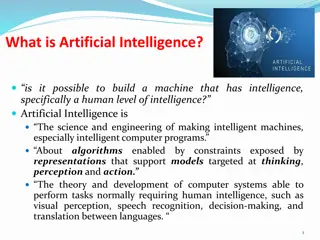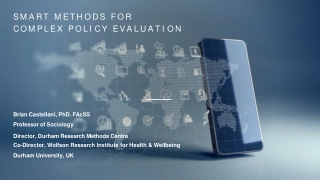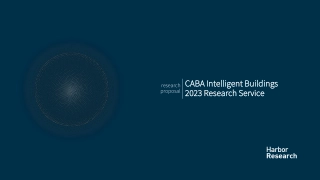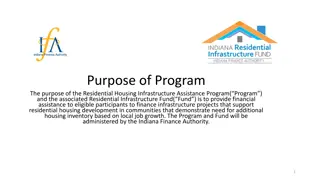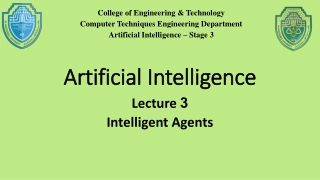
Smart Buildings Market Paves the Way for Intelligent Infrastructure
Global smart buildings market accounted for USD 72.8 billion and is expected to reach USD 304.3 billion in 2032, this market is estimated to register a CAGR of 15.8%.nnDownload a sample report in MINUTES@//market.us/report/smart-building-market
Download Presentation

Please find below an Image/Link to download the presentation.
The content on the website is provided AS IS for your information and personal use only. It may not be sold, licensed, or shared on other websites without obtaining consent from the author. Download presentation by click this link. If you encounter any issues during the download, it is possible that the publisher has removed the file from their server.
E N D
Presentation Transcript
Overview Global smart buildings market accounted for USD 72.8 billion and is expected to reach USD 304.3 billion in 2032, this market is estimated to register a CAGR of 15.8%. The smart buildings market refers to the industry centered around the creation and maintenance of buildings equipped with advanced systems that enhance efficiency, comfort, and sustainability. These buildings utilize cutting-edge technology such as the Internet of Things (IoT), artificial intelligence (AI), and building automation systems (BAS) to manage and control various functions like heating, ventilation, air conditioning (HVAC), lighting, security, and energy consumption. The goal is to create environments that are not only energy-efficient but also improve the quality of life for occupants by offering better control and personalization. One of the main drivers of the smart buildings market is the growing emphasis on energy efficiency and sustainability. With increasing concerns about climate change and the need to reduce carbon footprints, smart buildings are seen as a key solution. They can significantly lower energy usage by automatically adjusting systems based on occupancy and usage patterns. Additionally, the integration of renewable energy sources and advanced energy management systems allows for more sustainable operation. As a result, businesses and governments are increasingly investing in smart building technologies to meet regulatory requirements, achieve cost savings, and create healthier, more productive environments for people.
Key Market Segments Based on Component Solution Building Infrastructure Management Security and Emergency Management Energy Management Network Management Workforce Management Waste Management Services Consulting Implementation Support and Maintenance Based on End-User Residential Commercial Industrial Download a sample report in MINUTES@https://market.us/report/smart-building-market/request-sample/ The smart buildings market is segmented into solutions and services. The solution segment is the most profitable, with a projected CAGR of 15% and a total revenue share of 56% in 2022. By end-user, the market is divided into commercial, residential, and industrial. The commercial segment is the most lucrative, holding a revenue share of 56.1% and a projected CAGR of 15% during the forecast period. Key Players ABB Ltd. Cisco Systems Inc.
Emerson Electric Co. Hitachi Ltd. Honeywell International Inc. Johnson Controls Legrand SA Schneider Electric SE Siemens AG Telit IBM Corporation Other Key Player Driving Factors:Increasing demand for energy efficiency and urbanization are key drivers in the smart building market. Rising energy prices and environmental concerns emphasize energy-efficient buildings, which smart buildings achieve by optimizing energy consumption. Urban growth demands smart buildings that can efficiently accommodate large populations, optimize space, and enhance safety. Opportunities:Advancements in IoT and AI technologies provide new opportunities for smart building automation. Sensors and devices collect data on building performance and user behavior, optimizing operations and improving comfort and safety. Growing awareness among building owners and operators about cost savings, enhanced occupant comfort, and sustainability drives investment in smart technologies. Restraining Factors:Implementing smart building technologies requires specialized skills, and there may be a shortage of qualified professionals, hindering installation and maintenance. Reliance on data collection and communication makes smart buildings vulnerable to cyberattacks, raising security concerns. Resistance to change from building owners accustomed to traditional systems can also limit the adoption of smart technologies. Challenges:Overcoming the skills gap and ensuring cybersecurity are major challenges. Convincing building owners of the profitability and benefits of smart technologies, despite their resistance to change, is crucial for broader market adoption.








